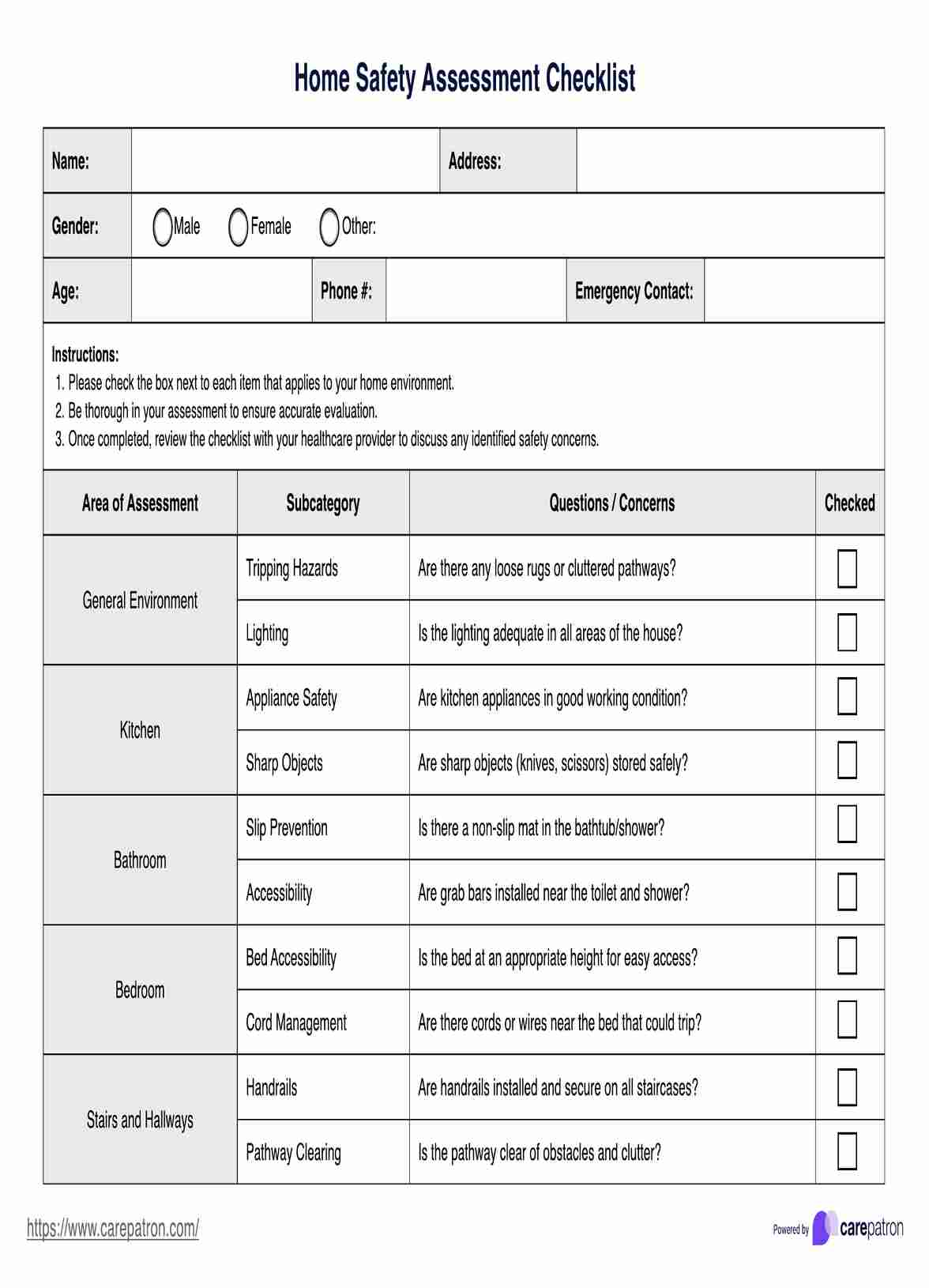Home safety assessments are used by individuals, families, caregivers, and healthcare professionals to evaluate potential hazards and promote safety within residential environments.

Home Safety Assessment
Ensure a safer home environment with our comprehensive Home Safety Assessment. Identify potential hazards and take proactive steps for peace of mind.
Use Template
Home Safety Assessment Template
Commonly asked questions
Regular home safety assessment, especially during significant life changes such as aging, illness, or moving into a new residence, is advisable to ensure ongoing safety and well-being.
Home safety is crucial for preventing accidents, injuries, and even fatalities, providing peace of mind and enabling individuals to live independently and comfortably in their homes.
EHR and practice management software
Get started for free
*No credit card required
Free
$0/usd
Unlimited clients
Telehealth
1GB of storage
Client portal text
Automated billing and online payments











